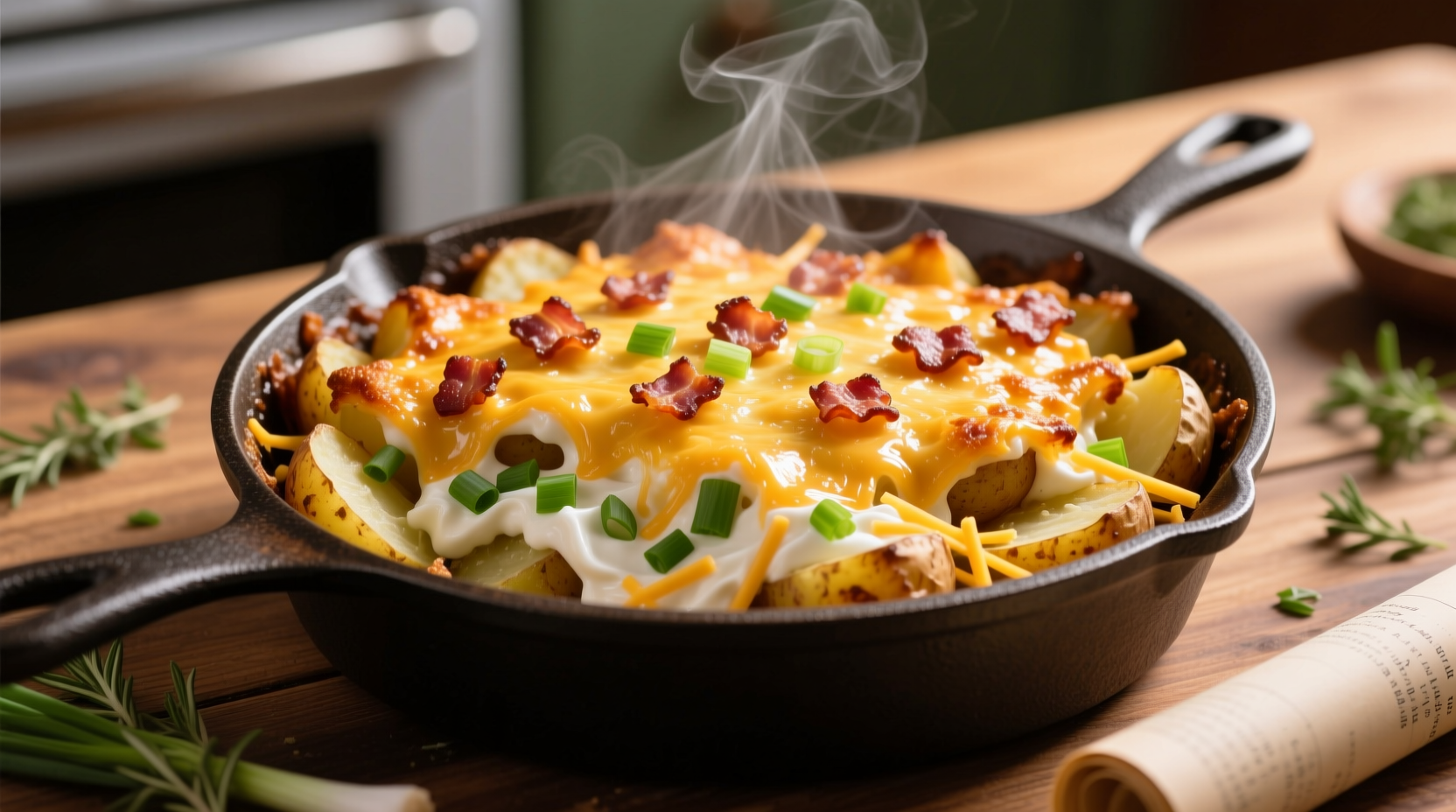The perfect loaded potato casserole combines creamy mashed potatoes with crispy bacon, melted cheese, sour cream, and green onions for a rich, comforting side dish that's ideal for family dinners, potlucks, and holiday gatherings. This comprehensive guide delivers a foolproof recipe with professional cooking techniques, ingredient insights, and customization options to create the ultimate version of this American comfort food classic.
What Makes a Potato Casserole Truly "Loaded"
While basic potato casseroles exist, the "loaded" version transforms this humble side into a decadent crowd-pleaser. The key difference lies in the strategic layering of restaurant-quality ingredients that create complex textures and flavors. According to culinary research from the USDA Agricultural Research Service, potatoes remain America's fourth most consumed vegetable, making this elevated preparation method particularly relevant for home cooks seeking to maximize their potential.
| Regular Potato Casserole | Loaded Potato Casserole |
|---|---|
| Basic mashed potatoes | Russet potatoes with Yukon Gold blend |
| Butter and milk only | Heavy cream, sour cream, and cream cheese |
| No meat component | Crispy bacon or pancetta throughout |
| Single cheese type | Three-cheese blend (cheddar, Monterey Jack, Parmesan) |
| Minimal toppings | Generous green onions, extra bacon, and optional jalapeños |
The Evolution of Potato Casseroles in American Cooking
Potato casseroles have evolved significantly since their mid-20th century origins. Understanding this timeline helps appreciate why the "loaded" version has become so popular:
- 1950s: Basic potato casseroles emerged using instant mashed potatoes and canned soup as binders
- 1970s: Addition of cheese and bacon began appearing in regional cookbooks
- 1990s: "Loaded baked potato" concept from restaurants inspired home adaptations
- 2010s: Social media accelerated the "loaded" trend with creative variations
- Today: Loaded potato casserole has become a staple at potlucks and holiday gatherings
Essential Ingredients and Why They Matter
Creating an exceptional loaded potato casserole requires understanding each component's role. Professional kitchens use these ingredient principles that home cooks can easily replicate:
Potato Selection Strategy
Don't just grab any potatoes! The perfect loaded casserole uses a strategic blend:
- Russet potatoes (60%): Provide fluffy texture and absorbent quality for dairy
- Yukon Gold (40%): Add natural buttery flavor and creamy consistency
Dairy Components That Make the Difference
According to food science research from USDA National Institute of Food and Agriculture, the right dairy combination creates superior texture:
- Cream cheese (4 oz): Adds richness without making potatoes gluey
- Heavy cream (½ cup): Creates luxurious mouthfeel compared to milk
- Sour cream (1 cup): Provides tang that balances richness

Step-by-Step Preparation Guide
Follow this professional technique sequence for guaranteed success. The key is managing moisture content while building flavor layers.
Potato Preparation Protocol
- Peel and cut potatoes into uniform 1½-inch chunks
- Soak in cold water for 20 minutes to remove excess starch
- Boil in salted water until fork-tender (15-18 minutes)
- Critical step: Drain thoroughly and return to warm pot for 2 minutes to evaporate excess moisture
Building Flavor Layers
The order of ingredient incorporation affects final texture significantly:
- Mix warm potatoes with cream cheese first (melts evenly)
- Add warm heavy cream gradually while mashing
- Incorporate sour cream last to preserve its tangy character
- Fold in ⅔ of bacon and ½ of cheeses gently to maintain light texture
Avoiding Common Pitfalls
Even experienced cooks make these critical mistakes with loaded potato casseroles:
Moisture Management Issues
Excess water is the #1 cause of soggy casseroles. Prevent this by:
- Never adding cold dairy to potatoes (causes gumminess)
- Draining potatoes thoroughly and letting them steam-dry
- Using full-fat dairy products (low-fat versions contain more water)
Cheese Selection Mistakes
Not all cheeses melt equally well. Avoid pre-shredded cheese which contains anti-caking agents that prevent smooth melting. Instead, use block cheese you shred yourself for optimal texture.
Customization Options for Every Occasion
Loaded potato casserole adapts beautifully to different dietary needs and serving contexts. Understanding these context boundaries helps you modify successfully:
Dietary Adaptations
- Gluten-free: Naturally compliant (verify all ingredient labels)
- Dairy-free: Substitute with cashew cream and vegan cheeses
- Lower calorie: Replace half the potatoes with cauliflower
- Keto-friendly: Increase cheese content and add extra bacon
Occasion-Specific Adjustments
- Holiday gatherings: Add truffle oil and chives for elegance
- Game day: Incorporate diced jalapeños and smoked paprika
- Weeknight dinner: Simplify with frozen hash browns (thoroughly thawed)
- Potlucks: Bake in disposable pan for easy transport
Serving and Storage Best Practices
Proper handling maintains quality from oven to table:
- Rest 10 minutes after baking for cleaner slices
- Store leftovers in airtight container for up to 4 days
- Reheat individual portions with splash of cream to restore moisture
- Freeze unbaked casserole for up to 3 months (thaw before baking)











 浙公网安备
33010002000092号
浙公网安备
33010002000092号 浙B2-20120091-4
浙B2-20120091-4